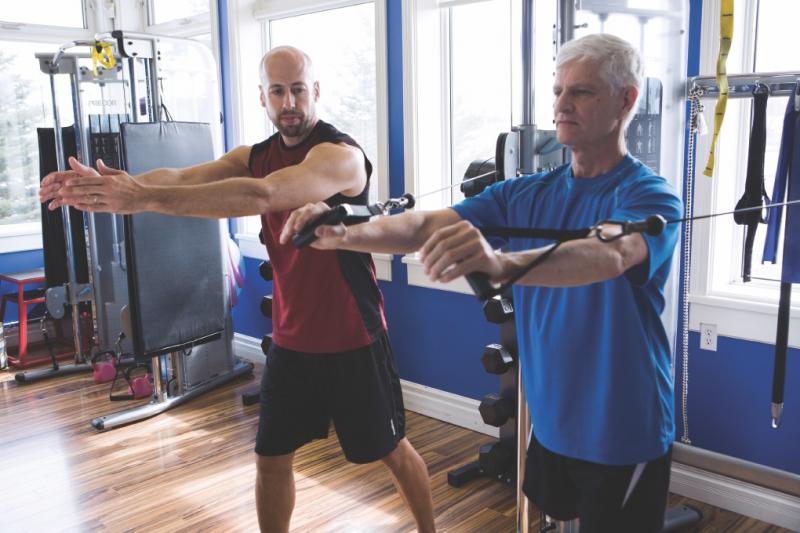Have you asked yourself,
why am I weak?
Where Did My Strength Go?
Have you thought,
I used to be able to do this. I’m not that old.
Let me explain what happens as we age.
From the age of 40, our body’s ability to repair and replace muscle is diminished. Our muscle mass, function and strength decreases with age. This is called sarcopenia. And sad to say, this is normal aging process.
The physiological changes that occur in our muscles are characterized by a decrease in their size and amount of muscle fibers, mainly in the fast-twitch muscles which allow us to increase our pace with movement. We notice this change when our normal walking speed slows down.
Reasons for waning muscle mass are due to the decline in hormonal levels such as testosterone, estrogen and vitamin D, decreased physical activity, sedentary lifestyle, neurological changes, inflammation and insufficient protein intake.
The presence of chronic diseases, such as obesity, diabetes, kidney disease, neurogenetic disorders, congestive heart failure, rheumatoid arthritis and other disorders lead to pain and fatigue contributing to the process of sarcopenia.
Diminished muscle mass leads to weakness, loss of balance and decreased mobility. Falls can be the end result of sarcopenia causing disabilities due to broken hips, arms, wrists and other areas.
As we live longer, our attention and goal should be to enhance our life and reduce fragility, falls, loss of independence and the demand for long-term care.
How do we slow down this aging process?
Exercise and adequate nutrition continue to be the gold standard for therapy, even in the midst of pharmaceutical treatment. Protein intake and physical activity give fuel and stimulate muscle growth.
Resistance and weight training are recommended to build and enhance muscle strength. A few basic exercises performed without equipment and can be done at home, are chair squats, toe raises and push-ups against a counter. To find more information and start an exercise program, check with your local YMCA for classes.
One thing you can do every day is to get up out of the chair, move around and pick up something somewhat heavy and bring it to another area of the house every 90 minutes. This will help stimulate circulation and ensure muscle usage.
A dietary intake of 25 to 30 grams of protein per meal is recommended to help counteract sarcopenia. For example, a normal serving of protein is 3 to 4 ounces, which is the size of a deck of cards or the palm of your hand. This is roughly 30 grams of protein.
Sources of protein are: fish, chicken, turkey, pork, lean meat, eggs, cheeses, cottage cheese, milk, beans, Greek yogurt, nuts (almonds, walnuts, pumpkin seeds) and peanut butter to name a few.
To make this easy, add protein to each meal or snack. Below are examples.
Be creative. Have fun with mixing food items together. Add variety to your meals to get the best source of all minerals and vitamins. Get yourself involved with the pleasure of cooking.
Slow down the process of sarcopenia and aging. Walk upright, be active and enjoy life. And skip the daily morning donut.
Remember, the less you do, turns into the less you do and eventually the less you can do.
- add chicken or a hardboiled egg to a salad
- combine cheese with sliced apples
- banana and peanut butter
- bagel with cheese or salmon
- avocado and hardboiled egg
- Add nuts and seeds to cereal
- Bean soup, chicken soup
- Chili
- Replace bread with a source of protein
Roe Chiacchio RN, CPT, CDP is a certified personal trainer specializing in cardiac and pulmonary rehabilitation and a certified dementia practitioner. In 1999, she started her business, ONWARD, Cardiovascular Health, Wellness and Dementia Management, located in Camden, Maine. Her education is based in behavior science, psychology, neuroscience and gerontology. Her interest is working to enhance physical performance and mental health of individuals through her training sessions and articles. Her hobbies are photography and international travel.































